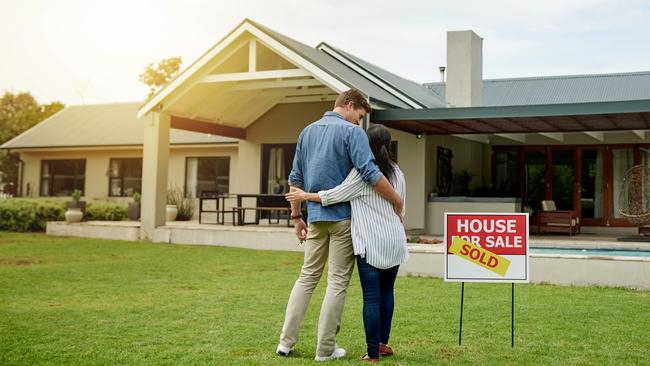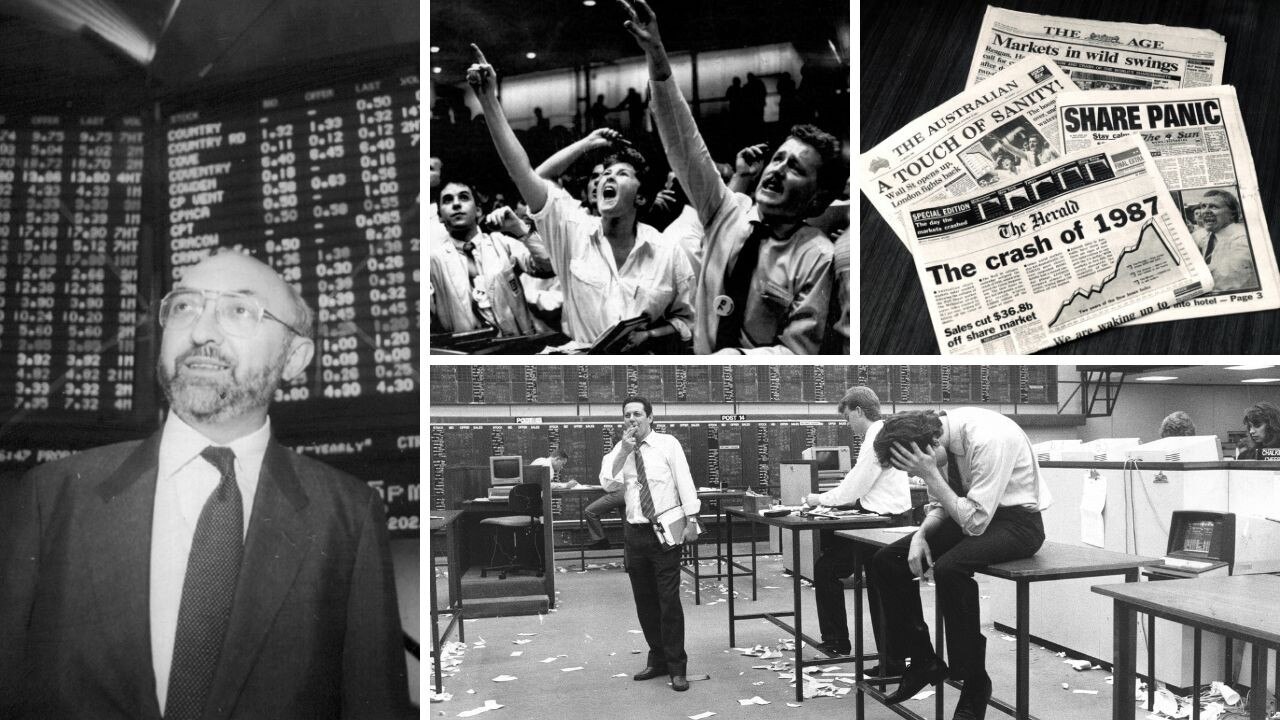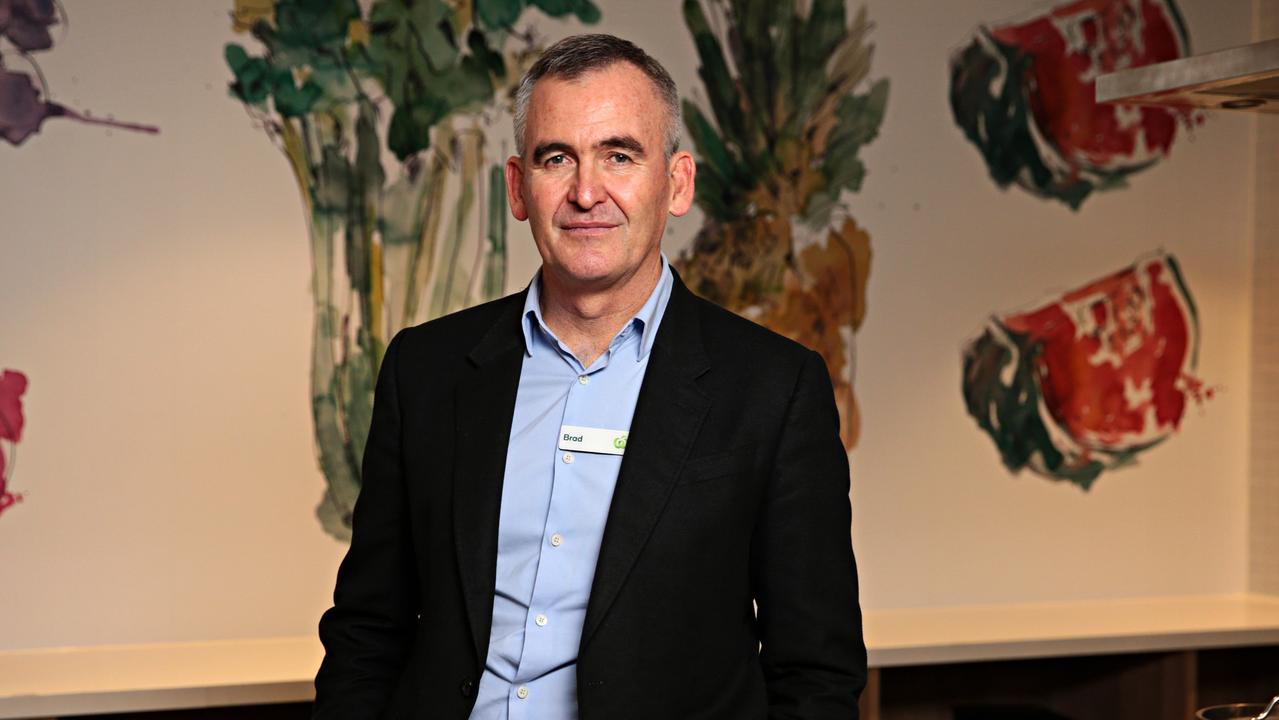It’s first home buyers who need a leg up the property ladder
First home buyers, usually to be owner-occupiers, are around 10-15 per cent of buyers. It is this group, and only those who bought over the past two years, that face the prospect of real pain.

Terry McCrann
Don't miss out on the headlines from Terry McCrann. Followed categories will be added to My News.
Hey, nobody likes to see the value of their house or apartment fall. And if you own two or three or four properties, you’re even less happy.
That’s to say, no one among the 65 per cent or so of adults who own property.
The one-in-every-three Australians who don’t own the property they live in, who are paying rent, would desperately like to see the prices of property fall.
This group actually splits into two sub-groups.
The much bigger one is, mostly young, people who – increasingly, desperately – want to buy a property, and who would very much like to see prices fall.
Many of them have been on a frustrating chase through the 2010s.
As interest rates fell, they could afford a bigger loan. But prices rose at a faster pace, tantalisingly keeping the realisation of their property-owning dream just beyond what they could afford.
That’s ‘afford’, if they were prepared to take on extraordinarily large loans relative to their wages and salaries.
Covid – and, actually, the Reserve Bank’s response, slashing its official rate to zero – supercharged this reality.
Those going into Covid and the near zero rates already owning a property just got richer.
Those owning a property and still with a loan were double-winners. The value of their property rose and their repayments fell.
Those not owning a property got screwed.
Those right now who didn’t buy might get the chance at cheaper property. But rates and their repayments will be higher.
Those that did manage to buy a property at the Covid height of the market face the prospect of being double screwed – in the exact opposite of those property-owning double-winners.
This is the prospect their property value will fall, maybe sharply, and their repayments have already gone up, with more to come.
Now there’s a smaller group of people who don’t own property – those who are quite happy or resigned to rent.
But as they are painfully finding out, especially in Melbourne and Sydney, when property prices go up, inevitably that feeds back into rents rising as well, and at a much faster pace than their incomes.
What gets completely lost in all this is that the vast majority of people buying property at any time are buying their – at least – second property.
These are people ‘trading up’ into a new home – the majority – and those buying investment properties.
First home buyers, usually to be owner-occupiers, are around 10-15 per cent of buyers. It is really only this group, and only those who bought over the past two years, that face the prospect of real pain.
How so? Think about it.
Those buying a second property have, by definition, either sold their first property – and cashed in a big, totally tax-free, capital gain; or are buying an investment property and still have most of that capital gain sitting unrealised on their first property.
A simple example. Someone bought a property for $500k ten years ago, sold it for $1m, trading up into a $1.5m property.
Yes the value of that second property might, and I stress might have fallen to $1.4m – almost certainly only temporarily, as property values will resume their inexorable rise.
But even so they would still be ahead $400k – the $500k profit on the first property less the $100k value fall on the second.
This is even more the case for multiple property owners. Unless they bought all of them very recently, the value falls so far will just take off some of the huge increases through the 2010s.
The basic truth is that property prices, especially in Melbourne and Sydney, were wildly inflated by surging migration-driven population growth, and artificially low interest rates.
Further, critically, all that came on top of the fact that the owner-occupied home remains the best investment anyone can make in their lifetime thanks to the capital gains tax exemption.
When you could buy that investment on a huge loan of all-but ‘free’ money; you were really and I mean really getting a free lunch. But one, for recent buyers, that did come with what might be termed ‘interest rate salmonella’.
Since the election we haven’t heard anything about Labor’s plan to help 10,000 people each year buy their first home.
You couldn’t ask for a better time to kick it off, with more sensible property prices and more realistic interest rates.
As I argued before the election, both plans – the now-government’s one and the now-opposition’s one – should be adopted, as they perfectly complemented each other.
Labor’s makes the government a co-owner in the property. It reduces repayments but also the share of the future capital gain.
The Coalition plan sharply reduces the buyer deposit, but leaves the buyer with the full repayments and all of any – tax-free – capital gain.



